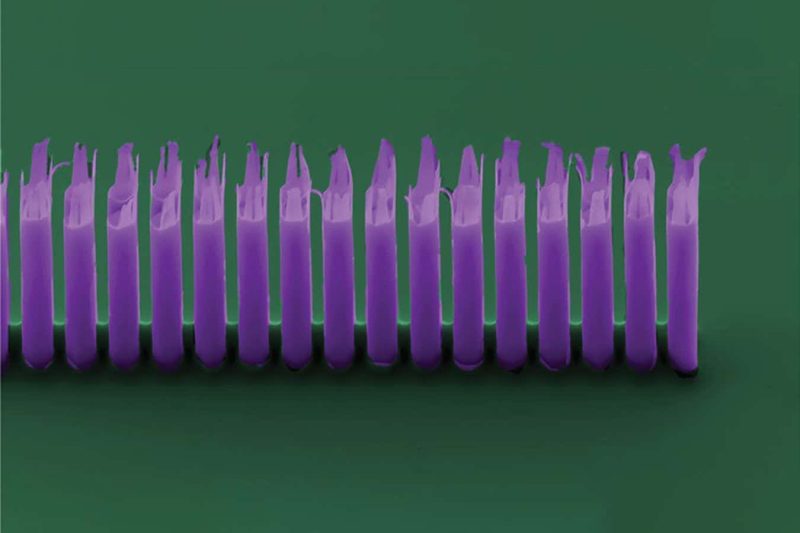Introduction
A team of researchers at the University of Erlangen-Nuremberg in Germany has developed a groundbreaking particle accelerator. This new accelerator is the smallest device of its kind ever built, measuring only 0.2 millimeters in length. What makes it truly unique is that it can produce fast and well-focused bunches of electrons, providing potential applications in the medical field. The researchers believe that with further advancements, it could potentially be reduced in size to fit on the tip of a pen.
Traditional Particle Accelerators
Particle accelerators, like the famous Large Hadron Collider, use electric fields and magnets to speed up particles like electrons. These electric fields are usually generated using radio waves, which have wavelengths measured in meters or centimeters. The researchers at the University of Erlangen-Nuremberg chose a different approach. They decided to accelerate particles using light, which has a significantly shorter wavelength measured in hundreds of nanometers. This allowed them to drastically shrink the size of their accelerator.
A Compact Design
The team created the tiny accelerator using silicon shaped into thousands of 2-micrometer tall pillars. These pillars were arranged into two parallel lines, forming a 0.2 millimeter long “runway.” In operation, laser light was shone onto the pillars from the top, while electrons were injected from the side. The interaction between the laser light and the pillars created an electromagnetic field that caused the electrons to clump together in narrow bunches. These particle clusters then accelerated through the structure at speeds exceeding 100,000 kilometers per second.
Potential for Advancements
The researchers also experimented with adding more pillars to the runway. They found that by increasing the length of the accelerator to 0.5 millimeters, they could accelerate the electrons at even greater rates, increasing the energy they carried by 43 percent. This demonstrates that the accelerator is scalable and has the potential to become more powerful while remaining compact enough to be integrated into chips or directly onto the end of an optical fiber.
Implications and Future Possibilities
While the current version of the accelerator only provides electrons with a fraction of the energy they gain in larger accelerators, the team believes there are ways to boost each electron’s energy. One idea is to construct the pillars from a glass material called fused silica, which can withstand more intense laser light. This could potentially enhance the accelerator’s performance.
The team envisions even greater possibilities for this technology. They believe that with further development, accelerators could eventually become small enough to fit on the tip of a pen. This opens up a range of new applications, from innovative treatment tools for doctors to compact sterilization tools for biology labs. The potential uses of this breakthrough technology are still largely unexplored, leaving room for innovation and discovery.
Overall, the development of the world’s smallest particle accelerator marks a significant step forward in the field of particle physics and opens up exciting possibilities for miniaturized accelerators in various industries.








